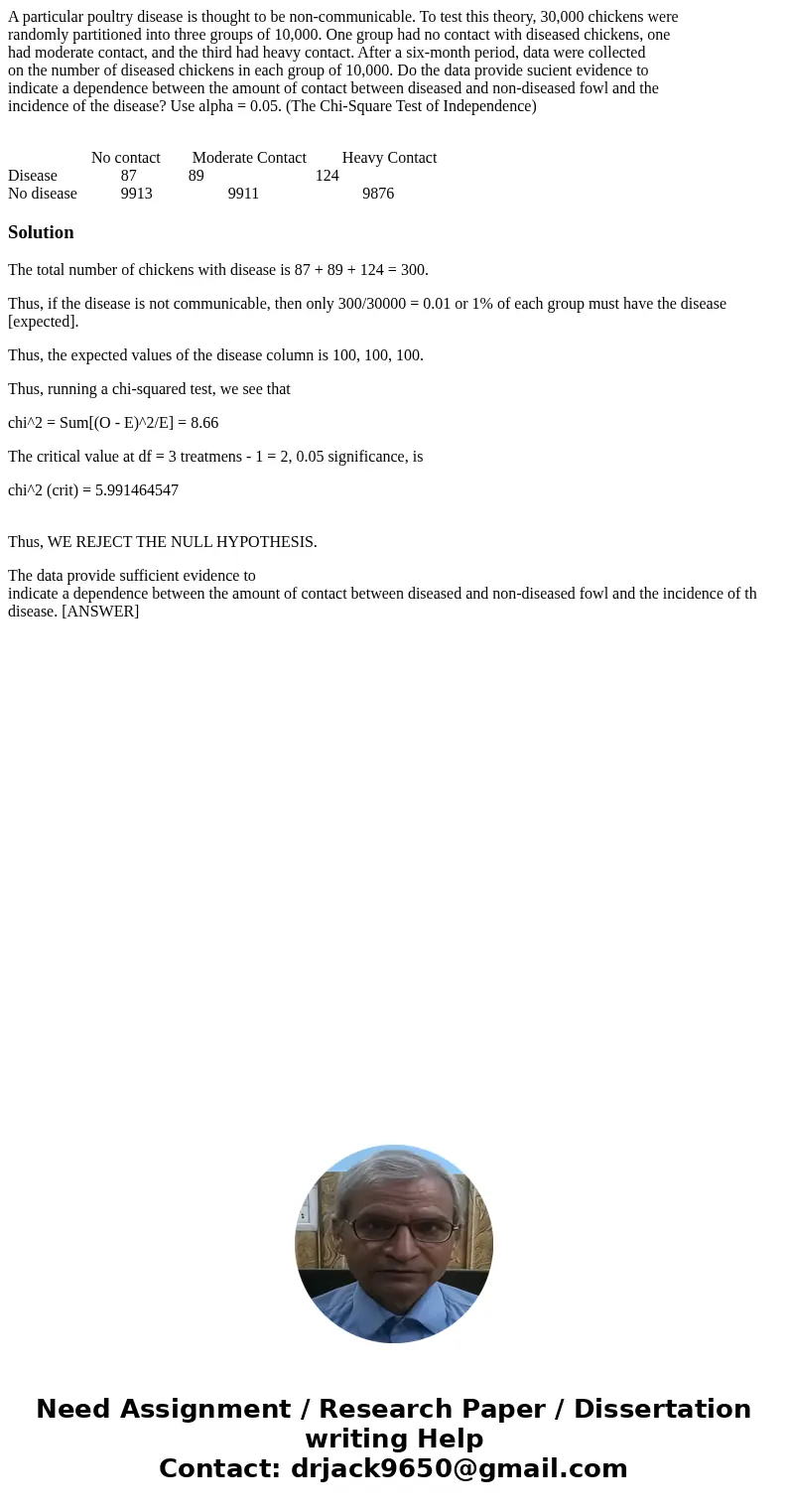A particular poultry disease is thought to be noncommunicabl
A particular poultry disease is thought to be non-communicable. To test this theory, 30,000 chickens were
randomly partitioned into three groups of 10,000. One group had no contact with diseased chickens, one
had moderate contact, and the third had heavy contact. After a six-month period, data were collected
on the number of diseased chickens in each group of 10,000. Do the data provide sucient evidence to
indicate a dependence between the amount of contact between diseased and non-diseased fowl and the
incidence of the disease? Use alpha = 0.05. (The Chi-Square Test of Independence)
No contact Moderate Contact Heavy Contact
Disease 87 89 124
No disease 9913 9911 9876
Solution
The total number of chickens with disease is 87 + 89 + 124 = 300.
Thus, if the disease is not communicable, then only 300/30000 = 0.01 or 1% of each group must have the disease [expected].
Thus, the expected values of the disease column is 100, 100, 100.
Thus, running a chi-squared test, we see that
chi^2 = Sum[(O - E)^2/E] = 8.66
The critical value at df = 3 treatmens - 1 = 2, 0.05 significance, is
chi^2 (crit) = 5.991464547
Thus, WE REJECT THE NULL HYPOTHESIS.
The data provide sufficient evidence to
indicate a dependence between the amount of contact between diseased and non-diseased fowl and the incidence of th disease. [ANSWER]

 Homework Sourse
Homework Sourse